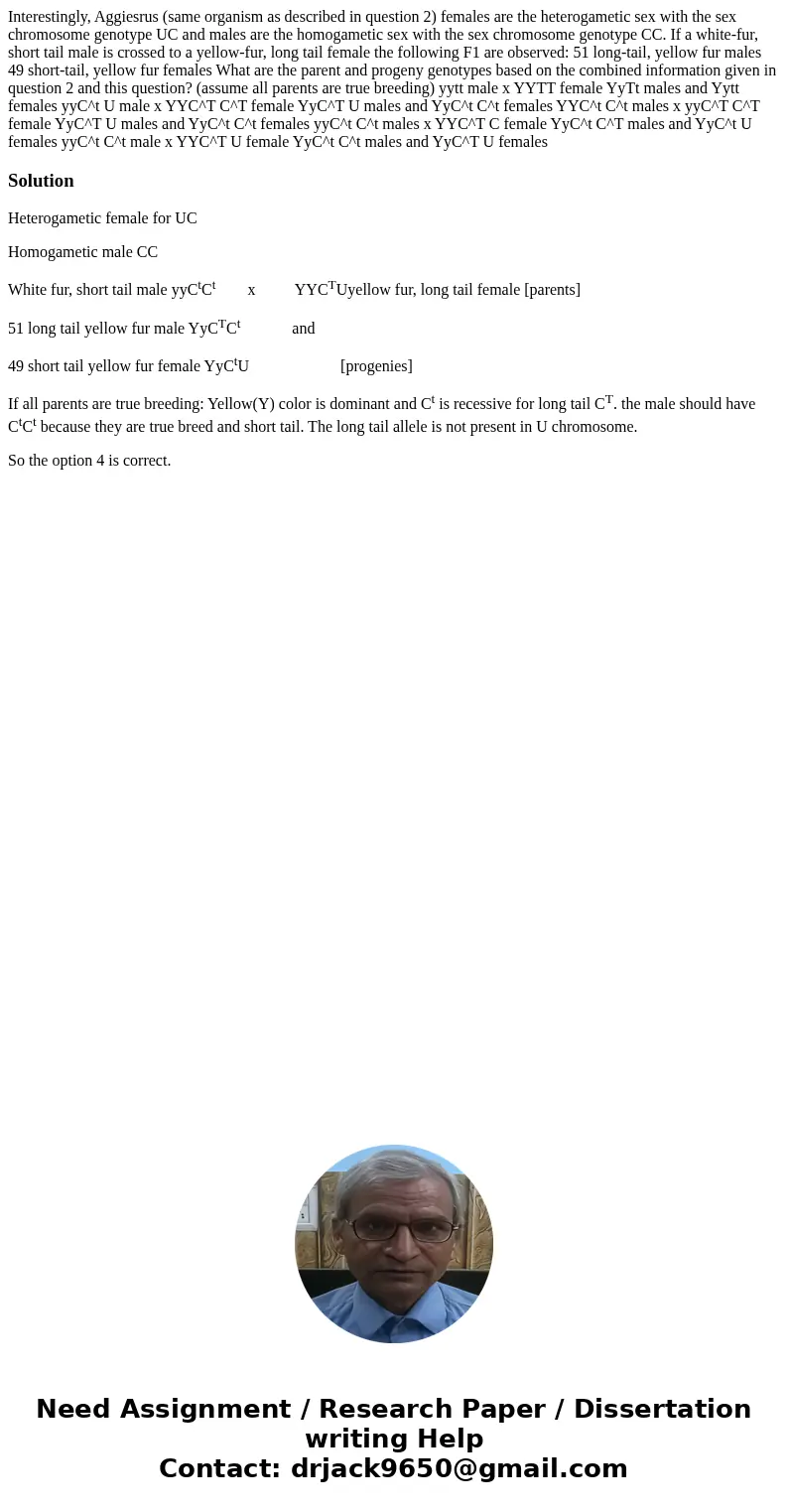Interestingly Aggiesrus same organism as described in questi
Interestingly, Aggiesrus (same organism as described in question 2) females are the heterogametic sex with the sex chromosome genotype UC and males are the homogametic sex with the sex chromosome genotype CC. If a white-fur, short tail male is crossed to a yellow-fur, long tail female the following F1 are observed: 51 long-tail, yellow fur males 49 short-tail, yellow fur females What are the parent and progeny genotypes based on the combined information given in question 2 and this question? (assume all parents are true breeding) yytt male x YYTT female YyTt males and Yytt females yyC^t U male x YYC^T C^T female YyC^T U males and YyC^t C^t females YYC^t C^t males x yyC^T C^T female YyC^T U males and YyC^t C^t females yyC^t C^t males x YYC^T C female YyC^t C^T males and YyC^t U females yyC^t C^t male x YYC^T U female YyC^t C^t males and YyC^T U females
Solution
Heterogametic female for UC
Homogametic male CC
White fur, short tail male yyCtCt x YYCTUyellow fur, long tail female [parents]
51 long tail yellow fur male YyCTCt and
49 short tail yellow fur female YyCtU [progenies]
If all parents are true breeding: Yellow(Y) color is dominant and Ct is recessive for long tail CT. the male should have CtCt because they are true breed and short tail. The long tail allele is not present in U chromosome.
So the option 4 is correct.

 Homework Sourse
Homework Sourse